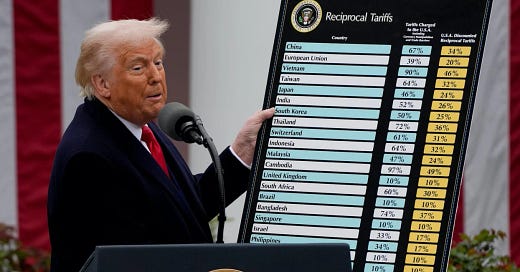Russia’s Curious Exemption: Inside Trump’s Global Tariff Blitz
Officials claim “zero trade volume,” yet the data reveals billions in ongoing commerce.
On a brisk April morning in Washington, President Donald Trump stood in the Rose Garden brandishing an oversized chart of his new “reciprocal tariffs.” Dozens of nations were listed on the poster board – from China and the European Union to tiny Pacific and African economies – each with eye-popping levy rates. Conspicuously absent, however, was one major name: Russia. When pressed on this omission, the White House offered a simple explanation: existing sanctions had “rendered trade between the two countries as zero.” In other words, there was nothing left to tariff. It was a definitive claim – and a puzzling one. Just days earlier, the U.S. Trade Representative’s 2025 National Trade Estimate Report documented $5.2 billion in U.S.-Russia goods trade over the past year (2025 National Trade Estimate Report). The gulf between the political narrative and the documented reality could not have been starker.
(Kyiv Independent) President Trump holds up a “Reciprocal Tariffs” chart during the April 2, 2025 announcement of sweeping trade measures. The list included over 100 countries – from China to New Zealand – but pointedly excluded Russia*, which the White House argued was already effectively cut off by sanctions.* (Kyiv Independent) (ABC7 NY)
A History of Sanctions and Declining Trade
To understand how U.S.-Russia trade could become a flashpoint, it helps to review how we got here. For decades after the Cold War, commerce between the two nations waxed and waned with the political climate. In 2012, Russia joined the World Trade Organization and annual trade peaked around $31–36 billion (Kyiv Independent), a sign of tentative economic integration. But that trajectory soon reversed.
In 2014, following Moscow’s annexation of Crimea, Washington imposed an initial round of sanctions on Russian officials and strategic industries. Moscow hit back by banning many U.S. food exports. The political rift had an immediate chilling effect on trade. Still, despite tensions, U.S. businesses continued to buy and sell in Russia in the years that followed – until the rupture of a full-scale war.
Keep reading with a 7-day free trial
Subscribe to Morning Truth to keep reading this post and get 7 days of free access to the full post archives.





